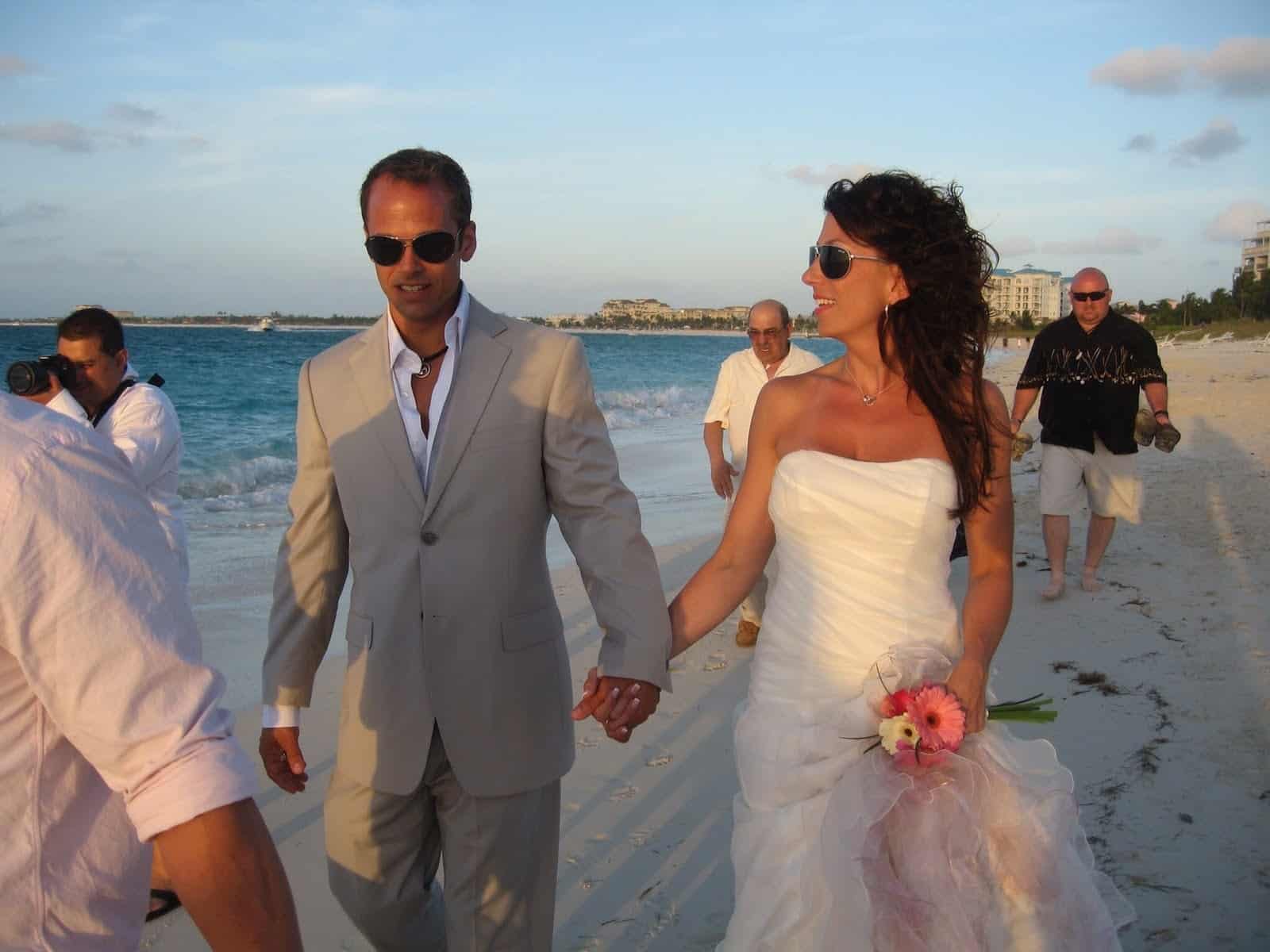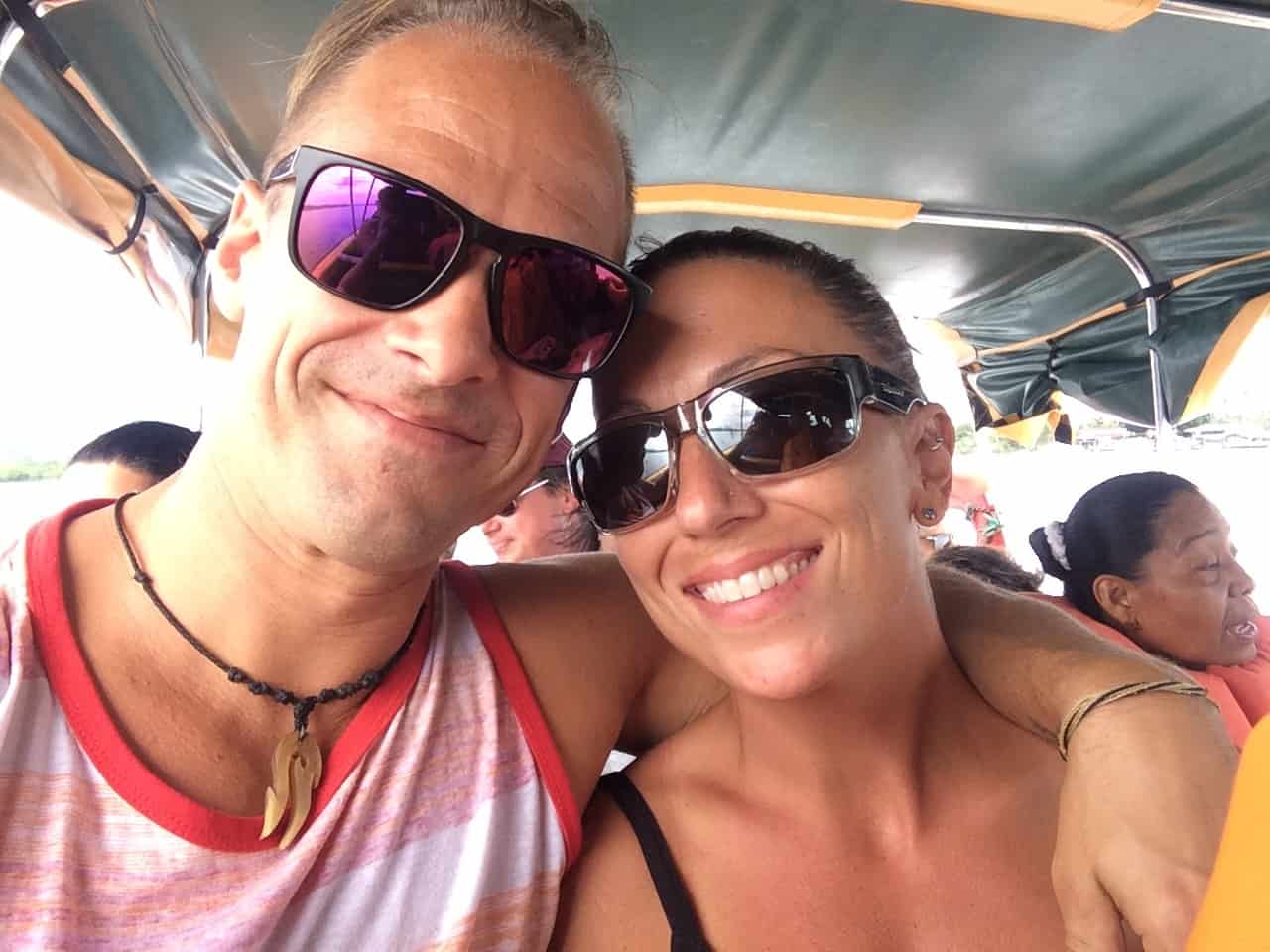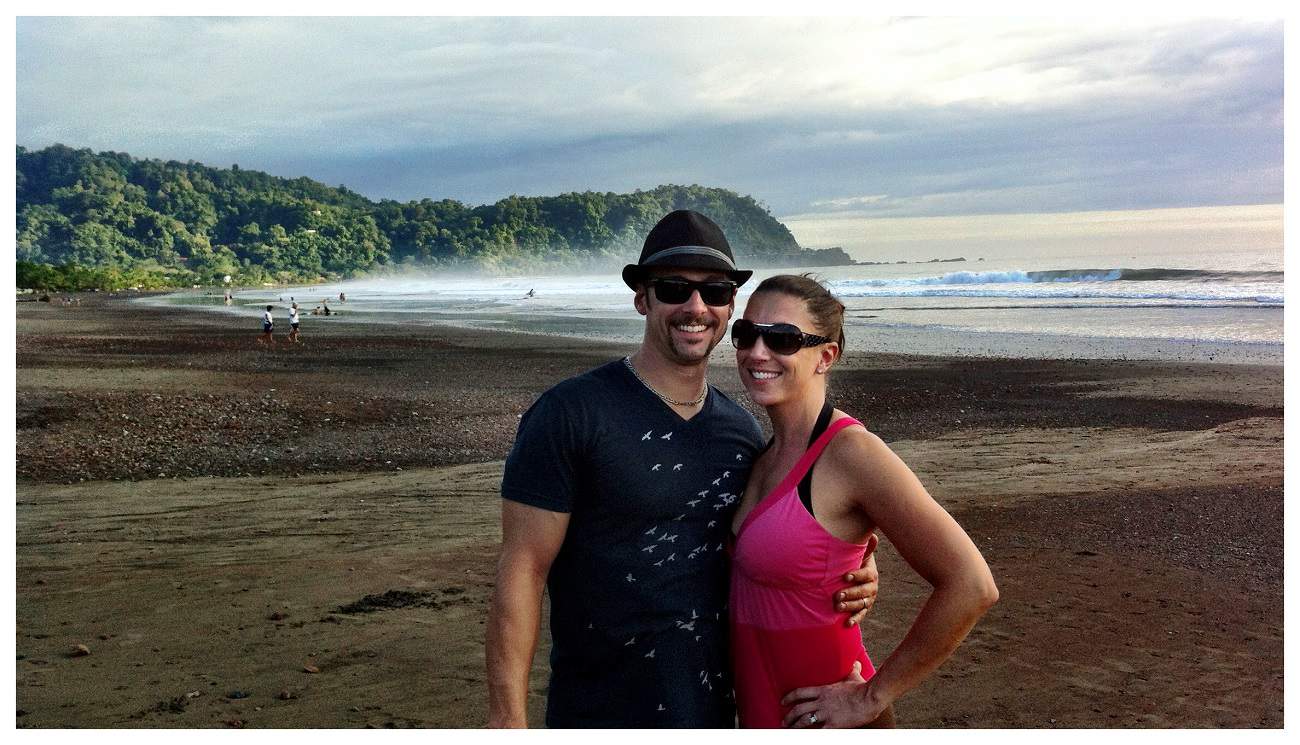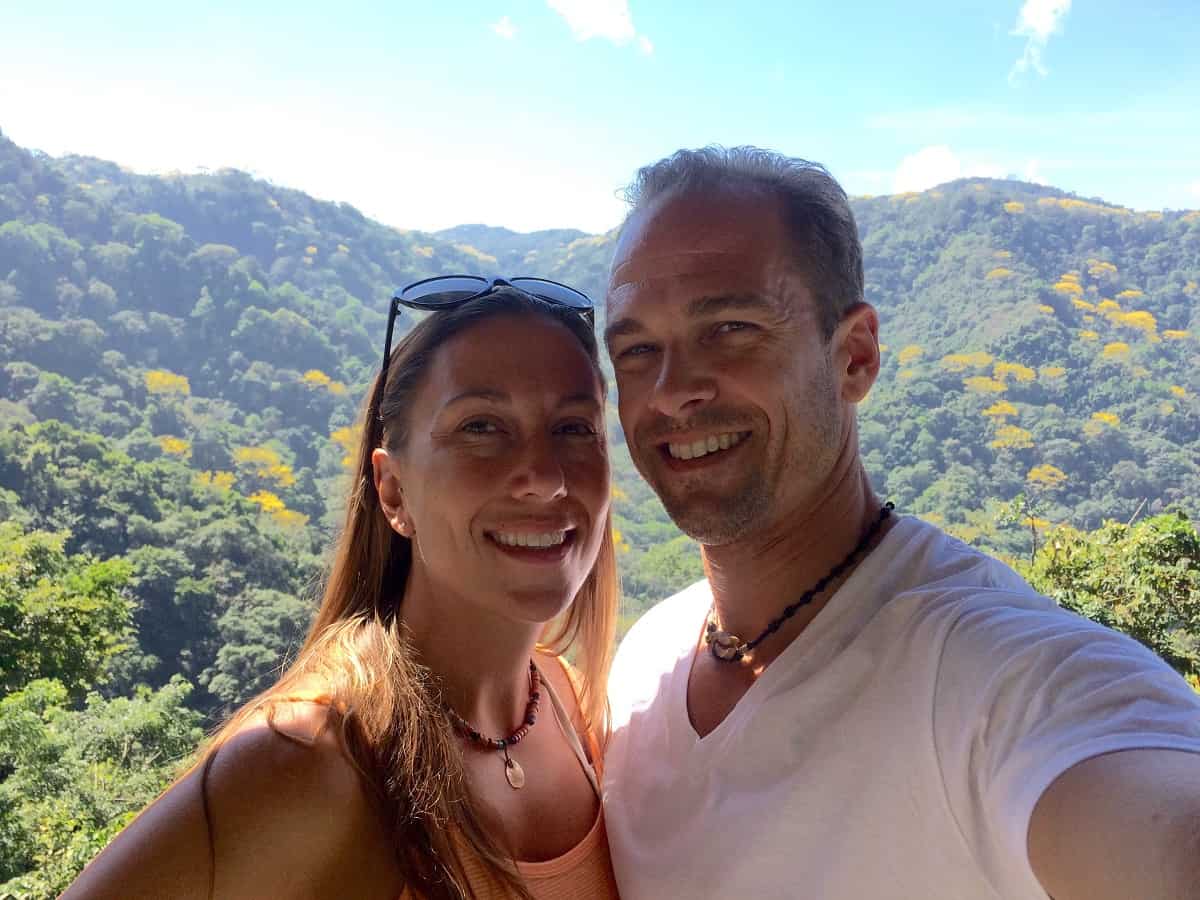SAN RAFAEL, Costa Rica — Four years, one month and 10 days after my wife and I moved from Los Angeles to Costa Rica, and well after we found our groove in our new home, we decided we wanted to have kids. When this idea came to us, there was only one obstacle: my vasectomy.
When one changes his mind about kids at 42, after swearing for years that “People who want to have kids should have kids, but those who don’t should not,” that man needs some quiet time.
Other than a few teenage years when I thought my high school sweetheart and I would last forever, I’ve been firm about crumb crunchers. They’re cute – from afar, in the lives of other people. When Cristina and I did the math seven years ago, she was paying $30 a month for birth control. I had stellar insurance at the time. A vasectomy was $50 out the door, back to life the same day. It was the right move at the time.
Then something changed at the end of 2016. I think it had something to do with getting sober four years ago, but I’m too close to the story to know for sure now. It’ll hit me in 10 years. I do know when the inciting incident struck.
On Christmas Day, I had this pit in my stomach, and not because I was having a bad time. Quite the contrary. My mother was down to visit for the fourth year in a row, and as always, it was lovely. We spent the day opening gifts, eating pancakes and cramming chocolate in our faces. After four years off the bottle, it’s been nice not swilling away the 25th with too many Irish coffees. I remember each of the last four Christmases.
Honey, we have to talk…
Because I wanted to be sure, I kept my mouth shut as long as I could. Then on Dec. 26, I confronted my wife with my dilemma.
“So, I’ve had something on my mind I can’t shake,” I started.
She was already sitting on the couch, waiting to start our morning meditation. If she could have sunk deeper into the couch, she would have.
“Sorry, I don’t mean to sound so grave, but I can’t not tell you what’s on my mind,” I added. “It’s funny, really. You’re gonna laugh.”
Cristina was still braced, eyes wide open.
“You’re scaring me,” she said.
She didn’t laugh. The conversation was a blur for me, as if my thoughts had streamed straight from my consciousness to my mouth, unrehearsed. What I do remember was that I couldn’t believe the words as they came out, something about what I knew and what I didn’t know. For sure the words “make a baby” were in there somewhere, but I couldn’t tell you the rest.
“This is so nice,” I told her, coming back into focus, apologizing for the shock. “I could do this with you forever. I’m fine with the decision we made, but…”
“But what, Damon?” Tears were streaming down her face.
“I can’t help but wonder if there’s more possible now? I also wonder if it’s too late.”
At 40, Cristina is not as old as I am, but she’s not far behind. There were more questions than declarations that day. We agreed to keep the conversation going, laying it all on the table. We also agreed that we’d take our time, and we agreed that what would happen was what would happen. We didn’t even know how to tackle the logistics. If we couldn’t come to a decision in a year, then we would stick to plan A.

A month later
The thoughts didn’t go away.
“It’s not like I’m suddenly an I-love-all-kids guy,” I explained to Cristina one day on the way to the gym. Then, realizing how selfish I’d been, I asked, “How are you doing?”
“You know my deal, Damon. I’ve always been good to follow your lead. My dreams about having children were teenage fantasies. I don’t know if I’d even be good at it.”
“Nobody does.”
“Yeah, I know, but I don’t even know if this body can have kids.”
After talking about this, what seemed like every day for weeks, we decided to put one foot in front of the other for the sake of time. There were some small hurdles that could stop us, like our 40-something bodies, so we decided to tackle those first.
Biological reality
We both had physicals. At the risk of bragging: for a couple of middle-aged folks, we can keep up with 20-year-olds. Cristina had her lady parts checked out. The day we had the ultrasound at San Rafael Arcángel in Liberia, she happened to be ovulating.
“Your insides match your outside,” the doctor said. “Your plumbing looks like you’re 20-something.”
Cristina’s feet barely touched the ground as we walked to the car.
“So,” she said, “What next?”
“I’m hungry. Let’s eat.”
Cristina slapped my shoulder. “No, goofball.”
“Find three good referrals for a urologist, then pick one.”
Finding a urologist in Costa Rica was equal parts easy and difficult. I wanted to survey the options, but one name kept coming up, Massimiliano Mauro Stamati at Hospital CIMA in Escazú. Still, I searched until I found a couple of names. We weren’t impressed with the reviews for most of them. I emailed two others, but only one replied.
“He said 30 to 40 percent chance of success,” I told Cristina, reading my email one evening during a Netflix movie.
She hung her head and got quiet, but I didn’t notice. After the fifth time she sighed, I paused the movie.
“What’s wrong?”
“I don’t like those odds.”
It’s funny how the coin flips. If birth control were 30 percent ineffective, people would engage in less adult behavior. That, or we’d have way more people on this planet. But flip that paradigm around and it’s bad news.
“Oh, I dunno, Cristina … 70 percent chance of rain isn’t terrible news.”
She wasn’t feeling it.
“Okay,” I said, “Let’s email this Stamati guy to see what he says.”

The next day my wife floated through the front door the same way she left the clinic in Liberia. “Guess what?” she asked.
“You’ve discovered a recipe for jellybean noodles?”
“Dr. Stamati replied.”
“50 percent?”
“70!”
On a mission, Cristina took at seat on the other side of the counter from me, opening up her Mac. She plunked away, toggling between more research and silliness on Facebook. Then she got quiet.
“Damon, look what I found.”
The look on her face was anxiety, like a kid who found a secret stash of cookies. She swung her screen around for me to see. The headline was clear: “OIJ arrests 3 doctors and pizzeria owner in organ trafficking sting in Costa Rican capital.“
For a moment, as I read the allegations in the article, my heart sank. It mentioned Dr. Stamati as one of the doctors who had been arrested. At first, I scanned, but then re-read the article twice.
“Crazy that it’s a pizzeria owner,” was all I could say at first.
We are pizzeria owners in Tamarindo, but in Costa Rica, that’s like saying we are into nature.
We discussed this new information at length.
Finally, Cristina blurted out, “What do you think?”
“I think,” I started, unsure of how I’d finish the sentence, but clear in my heart. “Authorities have made an accusation, which means the man will go before a judge.” After ten years in corporate management, I’ve been through investigations, court cases, tough interviews. I’ve watched former friends get fired for lying and stealing. I’ve seen charges made that we later found out were twisted or totally falsified.
Adding to that, Hospital CIMA appeared to have confidence in the doctor’s services, since Stamati was (and is) still practicing under their roof.
“Don’t you think we should be sure?” asked Cristina.
Confident in my ability to read people, I replied, “Sure, let’s meet with the good doctor.”
But my mind was already made up.
Two weeks later we met with Dr. Stamati at his office in San Rafael. He appeared to be genuine, caring, and intelligent. He walked us through the procedure, the costs, the recovery. At no point did I feel unsure about Stamati’s integrity. That was the end of the inquisition for us.
“No working out for two weeks after the surgery, and no sex for a month,” he said. “Do you have any questions?
We booked the surgery for two weeks later.
For the uninitiated, a vasectomy is easy, like neutering a pet. A urologist cuts the vas deferens, then ties off the four cut ends. Start to finish, it’s about 20 minutes of work. The reversal is a micro-surgery. Imagine trying to stitch together two slippery tubes of flesh not much thicker than coffee stir sticks. Those 70 percent odds were looking pretty good.
The big day
By noon we’d completed the intake and were sitting in the waiting room. The surgery was set for two o’clock.
“Damon?” a voice said as a nurse entered the waiting area.
“Soy yo,” I replied, standing, that’s me.
In the corner of the waiting area, a scrawny nurse beamed at me. This guy clearly liked his job. He introduced himself in Spanish.
“Hello, my name is Bryan,” he continued. “You’ll come with me. Please leave everything with your wife.”
“Bryan?” I confirmed, reaching out with my free hand to shake his as Cristina pulled my wedding band from my other hand. “Mucho gusto.”
“Do I wait here?” asked Cristina.
“Until 4:30 or 5,” said Bryan.
Bryan walked me down the hall to a room with curtained areas, one of which was for me. On the bed was a thin but full-sized robe, footies and a tan fleece blanket. The fleece was still warm from the dryer: I know because Bryan asked me to crawl under it once I was in my robe.
It was almost 12:30. I wondered what I would do for the next hour and a half. For a few minutes I meditated. The nurses reviewed my chart eight times, I think, checking it against my bracelet until everybody was confident I wasn’t there for a hysterectomy reversal.
Dr. Stamati and the anesthesiologist, Dr. Alfredo Ugalde, stopped to talk to me too. They both spoke English, which was comforting.
As the nurses rolled my gurney into surgery, it occurred to me that the closest I’d ever been to an operating room was watching “Grey’s Anatomy.” We passed a window, which was low enough for me to peek.
Inside the massive operating room, two doctors stood over a patient whose face I couldn’t see. Work lights hung like UFOs over the doctors, creating a hot spot in the middle of the space. The patient was under anesthesia, covered in hospital sheets, with a hole somewhere in the chest, and yes, there was blood.
“Oh,” was all I could say, averting my eyes as if I’d glanced into the neighbor’s window.
In the surgery room, which was the same as the other, but with less blood, Dr. Ugalde administered an epidural. Then Dr. Stamati arrived. By the time we started, I couldn’t feel my legs. I would be awake the whole time.
About 25 minutes into the surgery, Stamati popped up to tell me he was halfway done, switching to the other side of my body. As he settled in, his assistant said something in Spanish I didn’t catch, but Dr. Stamati chuckled.
“He said, ‘You’re going to have to name your first one after me,’” said Dr. Stamati.
Twenty minutes later, he re-appeared to inform me he was finished.
“We’re done,” he said.
“How’d you feel about it?” I asked.
He nodded, pursing his lips.
“Very easy,” he said, then wiped his hands, adding gravely, “Send me your results in one month.” Back when we set up the surgery, he’d advised me I could get tested closer to our home in Tamarindo.

Recovery
Suddenly all my years of diet and exercise were worth it. After three hours, the feeling came back to my legs. It was 5 p.m., but I’d been fasting since 4 a.m., so I was hungrier than a high school lineman. Cristina and I picked up my prescriptions at the pharmacy across from the hospital so we could focus on finding food.
My immediate post-surgery recovery was so easy, I felt well enough to catch a movie that evening, which we did.
Today makes two weeks since that day. I had my first visit to the gym this morning, which was a relief. Everything is healing well and we’re hopeful. Whatever happens at this point, I’m good. Cristina is too. This is out of our hands, but we’ll know more in two weeks. If there is no positive news after 90 days, then fate has spoken.
Since this is not my first rodeo in journalism, I shudder at the awful things I expect people will say about our choice. I’d be lying if I didn’t think all those things myself.
We’re being selfish. … We’re too old to raise children. … There are too many risks.
Yup, we know all these things. Perhaps we are being selfish and shortsighted. It’s not for me to judge, but if you feel you’re up to the job, knock yourself out.
[Editor’s note: This story has been edited to include information about the background of urologist Massimiliano Anunza Mauro Stamati, who was arrested in 2013 as part of an investigation by the Judicial Investigation Police (OIJ) of an alleged organ trafficking ring in Central America. OIJ authorities stated that Dr. Stamati and two other doctors had been part of a ring in which people were paid to allow doctors to extract their organs, which were then sold for between $80,000 and $100,000 each. Channel 7 Teletica News reported on Tuesday that the three doctors are set for trial in September. The Tico Times spoke with Dr. Stamati by phone on Friday, April 21 to inform him that we were including information about the charges in a story and to provide an opportunity for him to respond. He said, “At this time, I have no comment.”]
To be continued…
Damon Mitchell is a recovering fitness industry fancy-pants, with twenty plus years of experience in preventative health. He’s been certified by the National Academy of Sports Medicine and the American Council on Exercise. These days he works as a content creator, writing about technology, travel, history, and health. He and his wife, Cristina, live in Tamarindo.






